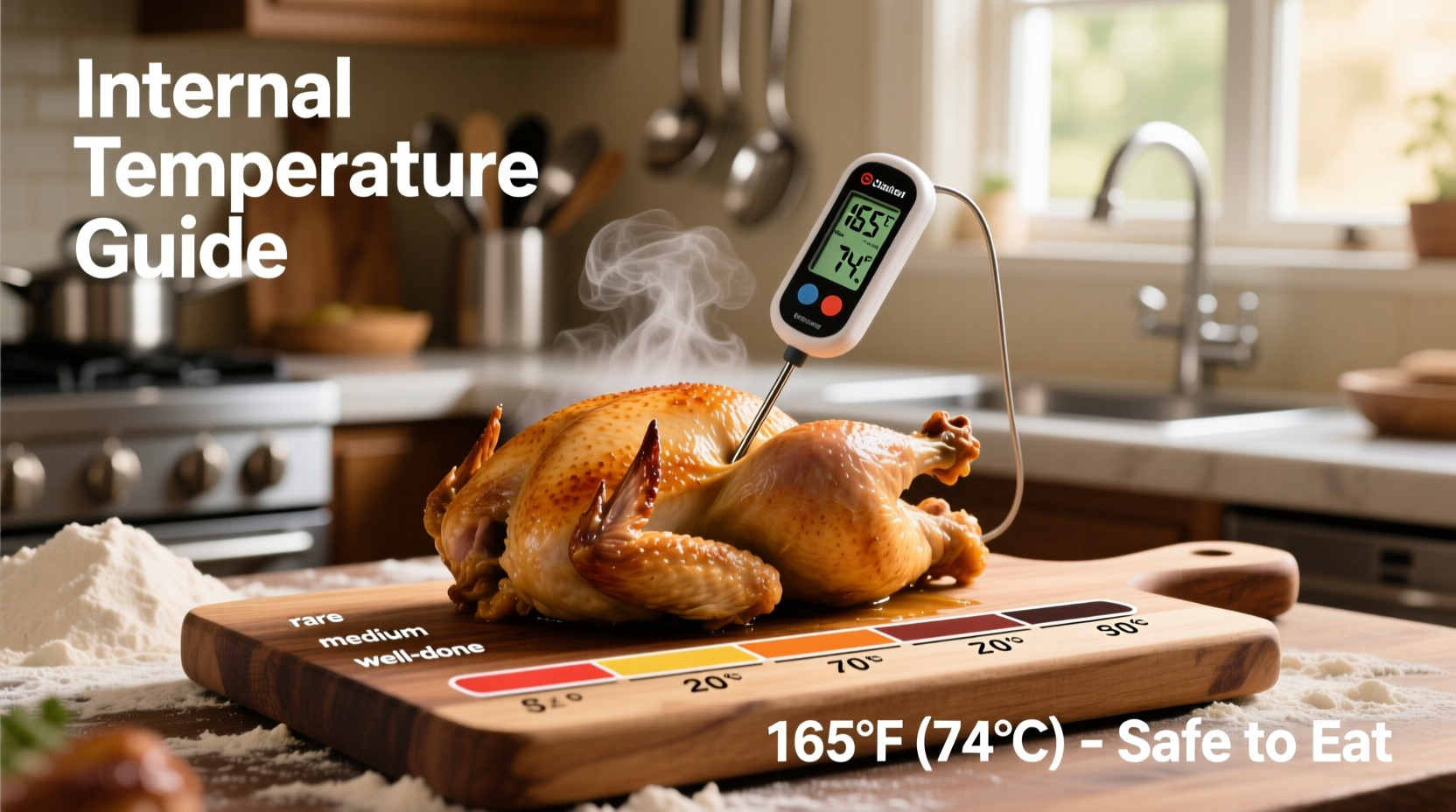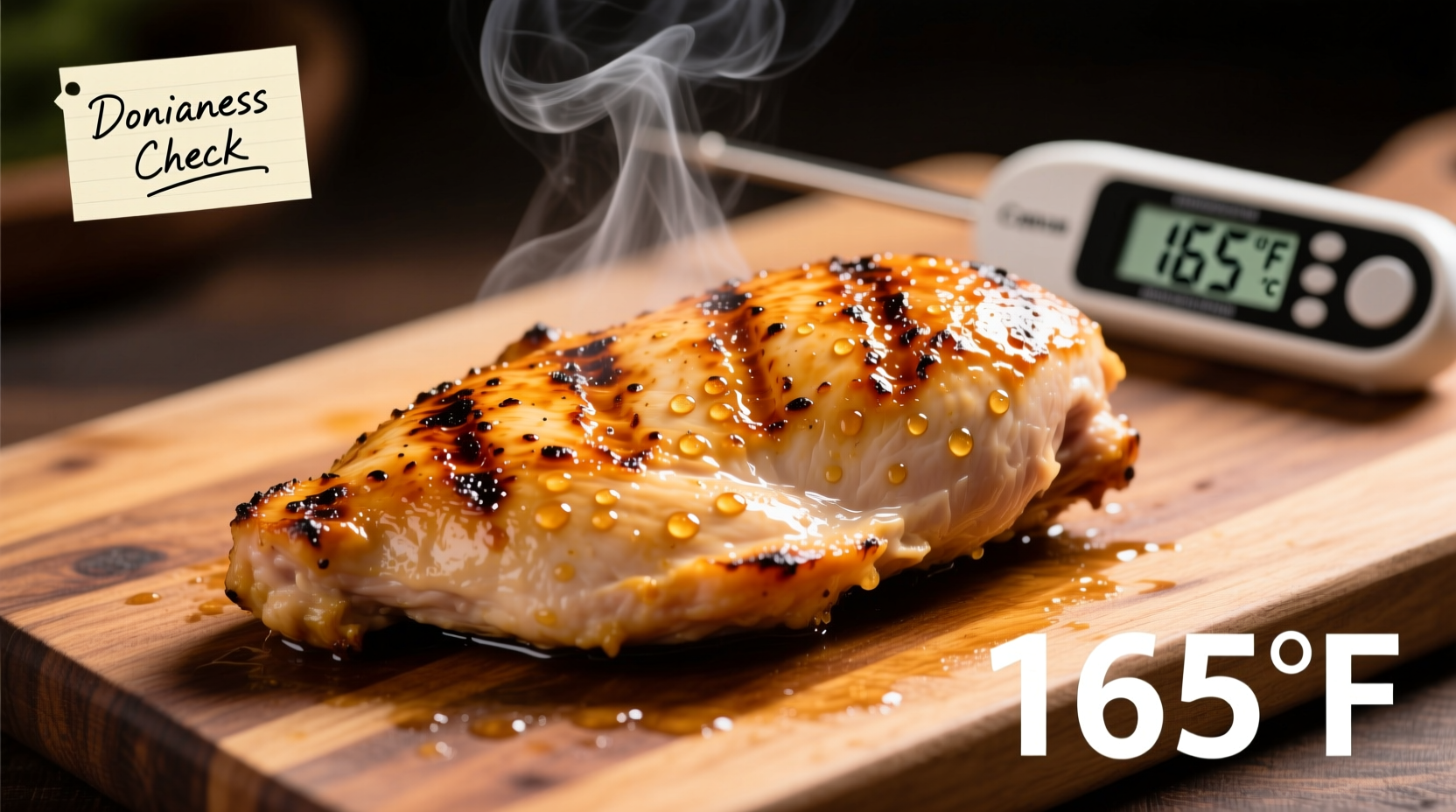Chicken must reach an internal temperature of 165°F (74°C) for safe consumption. Cooking times vary by cut and method: boneless breasts need 20-30 minutes at 375°F, thighs require 35-45 minutes, and whole chickens cook at 20 minutes per pound at 350°F. Always verify with a meat thermometer—visual cues alone can't guarantee safety.
Getting chicken cooking times right separates a juicy, flavorful meal from a dry disappointment or worse—foodborne illness. As a home cook, you've probably wondered how long to cook chicken for without compromising safety or quality. This guide delivers precise timing based on USDA standards, tested methods, and professional kitchen experience.
Why Temperature Trumps Time Alone
While "how long to cook chicken for" seems straightforward, cooking duration alone can't guarantee safety. The USDA Food Safety and Inspection Service confirms that 165°F internal temperature is the only reliable indicator of doneness, eliminating harmful bacteria like Salmonella. Factors affecting cooking time include:
- Starting temperature (chilled vs. room temperature)
- Cut thickness and bone presence
- Cooking method and equipment variations
- Oven accuracy (many home ovens vary by ±25°F)
A meat thermometer isn't optional—it's essential. The American Meat Science Association's research shows visual cues like clear juices or firm texture fail to indicate safe temperatures 30% of the time.
Essential Tools for Perfect Chicken Every Time
Before checking how long to cook chicken for, equip yourself properly:
- Digital instant-read thermometer (tested to ±0.5°F accuracy)
- Oven thermometer to verify your appliance's actual temperature
- Timer with multiple alerts for different components
Professional kitchens universally rely on thermometers, not timers. As Antonio Rodriguez explains, "Timing provides a framework, but temperature tells the real story. A 1-inch breast might take 22 minutes today but 26 tomorrow based on minor kitchen variables."
Cooking Times by Cut and Method
These guidelines assume 375°F oven temperature or medium-high stovetop heat unless specified. Always verify with a thermometer.
| Chicken Cut | Oven Roasting | Grilling | Pan-Searing | Air Frying |
|---|---|---|---|---|
| Boneless breast (6-8 oz) | 20-25 min | 6-8 min/side | 5-7 min/side | 12-15 min |
| Bone-in breast (10-12 oz) | 30-35 min | 8-10 min/side | N/A | 18-22 min |
| Thighs (bone-in) | 35-45 min | 10-12 min/side | 6-8 min/side | 18-20 min |
| Drumsticks | 35-40 min | 25-30 min | 10-12 min/side | 16-18 min |
| Whole chicken (3-4 lbs) | 1 hr 15 min - 1 hr 45 min | N/A | N/A | 45-55 min |
Critical Factors That Change Cooking Times
Understanding these variables prevents under or overcooking when following standard how long to cook chicken for guidelines:
Starting Temperature Matters
Chicken straight from the refrigerator takes 15-20% longer to cook than room-temperature poultry. The FDA Food Code recommends patting chicken dry and letting it sit 20 minutes before cooking for more even results.
Oven Accuracy Variations
Consumer Reports testing shows 68% of home ovens have accuracy issues exceeding ±15°F. Always use an independent oven thermometer—your appliance's display may be misleading.
The Crowding Effect
Overcrowding pans or baking sheets lowers surface temperature by up to 50°F, dramatically increasing cooking time. Maintain 1-inch spacing between pieces for proper air circulation.

Avoiding Common Cooking Mistakes
Even with correct how long to cook chicken for information, these errors cause problems:
Mistake: Relying on Cooking Time Alone
Solution: Insert thermometer into thickest part, avoiding bone. Wait 3 seconds for digital reading. USDA guidelines confirm 165°F is the safety threshold.
Mistake: Cutting to Check Doneness
Solution: Use a thermometer instead. Cutting releases juices, causing dryness. The National Chicken Council reports this single error increases moisture loss by 15-20%.
Mistake: Skipping Rest Time
Solution: Let chicken rest 5-10 minutes after cooking. Internal temperature continues rising 5-10°F during this period (carryover cooking), ensuring safety while maintaining juiciness.
Safety First: Handling Raw Chicken Properly
Before considering how long to cook chicken for, practice safe handling:
- Store below 40°F and use within 1-2 days of purchase
- Prevent cross-contamination: use separate cutting boards for raw chicken
- Wash hands and surfaces with hot, soapy water after contact
- Never rinse raw chicken (spreads bacteria via water droplets)
The USDA's Food Safety and Inspection Service emphasizes that proper handling reduces Salmonella risk by 99.9% compared to improper practices.
Advanced Tips for Perfect Results
Professional techniques that compensate for timing variables:
- Brining: 30-minute saltwater soak improves moisture retention by 25%
- Pounding: Even thickness ensures uniform cooking (target ¾-inch thickness)
- Butterflying: For breasts thicker than 1.5 inches, cut horizontally to create even layers
- Indirect heat: On grills, move pieces to cooler zone if browning too fast
Remember that carryover cooking continues after removal from heat. Pull chicken at 160°F for breasts (reaches 165°F during rest) or 175°F for thighs (dark meat tolerates higher temps).
When Timing Guidelines Don't Apply
Certain situations require abandoning standard how long to cook chicken for references:
- Frozen chicken: Add 50% to cooking time without thawing (USDA-approved)
- High-altitude cooking: Above 3,000 feet, increase time by 25% (water boils at lower temperature)
- Convection ovens: Reduce time by 25% or lower temperature by 25°F
- Stuffed poultry: Add 15-20 minutes and verify both chicken and stuffing reach 165°F
The FDA Food Code specifically notes that altitude adjustments are critical for food safety in mountainous regions where standard timing fails.











 浙公网安备
33010002000092号
浙公网安备
33010002000092号 浙B2-20120091-4
浙B2-20120091-4